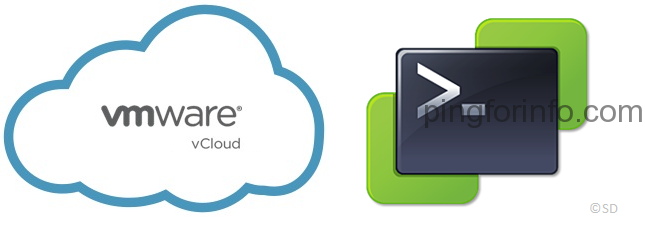Recently one of the community members had a requirement to generate report with the following details in .csv format.
– VM Name
– VMware Tools Version
– VM Hardware Version
– Category Names as columns and Tag names as values.
The following PowerCLI script will help to achieve this.
<# .SYNOPSIS Create .csv report with Virtual Machine Tag, Category, VMware tools version and VM Hardware details. .NOTES Author: Sreejesh Damodaran Site: www.pingforinfo.com .EXAMPLE PS> get-vmtagandcatefory.ps1
#>
# Connect to the vCenter
Connect-VIServer vCenter1 -user user1 -Password "password"
#Create vmInfo object
$vmInfo = @()
$vmInfoTemp = New-Object "PSCustomObject"
$vmInfoTemp | Add-Member -MemberType NoteProperty -Name VMName -Value ""
$vmInfoTemp | Add-Member -MemberType NoteProperty -Name ToolsVersion -Value ""
$vmInfoTemp | Add-Member -MemberType NoteProperty -Name HWVersion -Value ""
$vmCategories = Get-TagCategory
$vmCategories | %{$vmInfoTemp | Add-Member -MemberType NoteProperty -Name $_.Name -Value "" }
$vmInfo += $vmInfoTemp
get-vm | %{
$vmInfoTemp = New-Object "PSCustomObject"
$toolsVersion = Get-VMGuest $_ | select -ExpandProperty ToolsVersion
$vmInfoTemp | Add-Member -MemberType NoteProperty -Name VMName -Value $_.Name
$vmInfoTemp | Add-Member -MemberType NoteProperty -Name ToolsVersion -Value $toolsVersion
$vmInfoTemp | Add-Member -MemberType NoteProperty -Name HWVersion -Value $_.Version
$vmtags = ""
$vmtags = Get-TagAssignment -Entity $_
if($vmtags){
$vmCategories | %{
$tempVMtag = ""
$tempCategroy = $_.Name
$tempVMtag = $vmtags | Where-Object {$_.tag.category.name -match $tempCategroy}
if($tempVMtag)
{
$vmInfoTemp | Add-Member -MemberType NoteProperty -Name $tempCategroy -Value $tempVMtag.tag.name
}else {
$vmInfoTemp | Add-Member -MemberType NoteProperty -Name $tempCategroy -Value ""
}
}
}else{
$vmCategories | %{
$vmInfoTemp | Add-Member -MemberType NoteProperty -Name $_.name -Value ""
}
}
$vmInfo += $vmInfoTemp
}
$vmInfo | select * -Skip 1 | Export-Csv c:\temp\tags.csv -NoTypeInformation -UseCulture
CSV Output:



